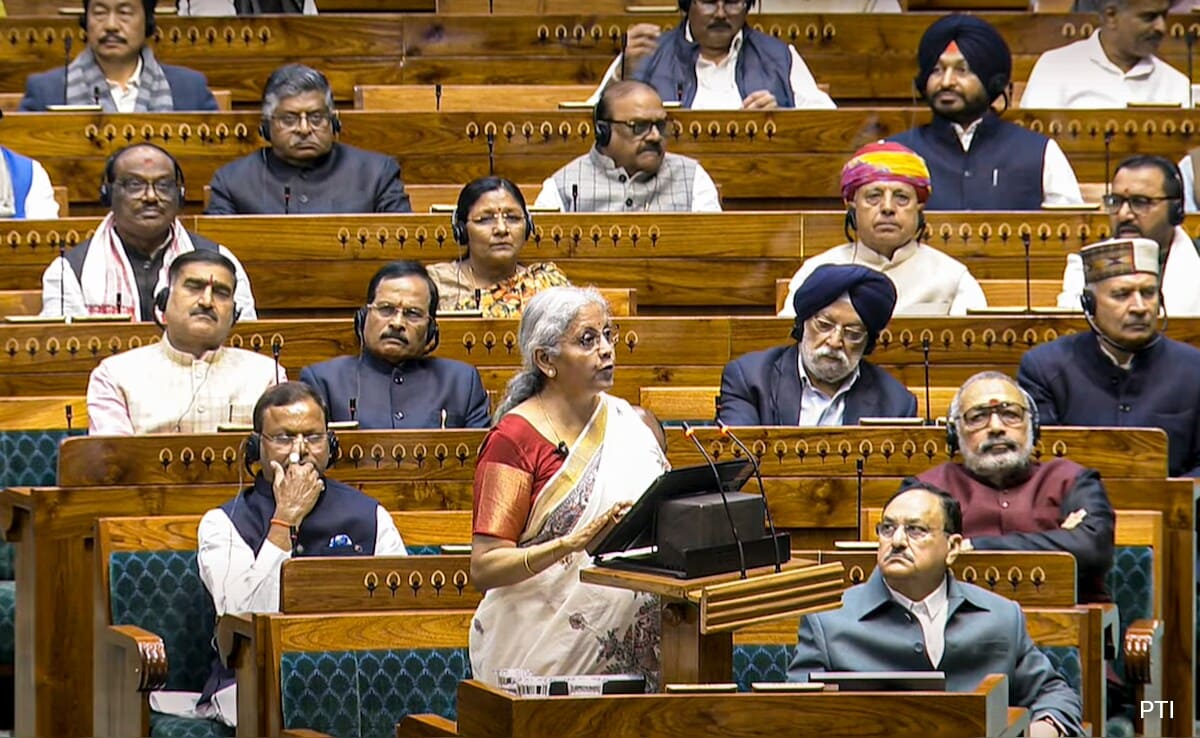There will be no income tax payable up to Rs 12 lakh – i.e., up to Rs 12.75 lakh including standard deductions – under the new regime, Union Finance Minister Nirmala Sitharaman said Saturday as she read out the Union Budget 2025.
In an announcement accompanied by loud cheers and enthusiastic thumping of desks by BJP MPs, led by Prime Minister Narendra Modi, she also announced revisions to the tax slabs (again, applicable to the new regime only).
Under the revised slabs, tax on income up to Rs 4 lakh is nil.
Between Rs 4 and Rs 8 lakh the tax will be five per cent.
Between Rs 8 and Rs 12 lakh it will be 10 per cent.
Between Rs 12 lakh and Rs 16 lakh it will be 15 per cent.
Between Rs 16 lakh and Rs 20 lakh it will be 20 per cent.
Between Rs 20 lakh and Rs 24 lakh it will be 25 per cent.
Above Rs 24 lakh it will be 30 per cent.
BUDGET 2025 | Slabs Revised For New Regime, No Tax On Income Till 4 Lakh
All of this, Ms Sitharaman said, will “substantially reduce tax burden on middle class and leave more money in their hands”. It will also boost household consumption, savings, and investment, she said.
📢 Zero Income Tax till ₹12 Lakh Income under New Tax Regime
▶️ Slabs and rates being changed across the board to benefit all tax-payers
▶️ New structure to substantially reduce taxes of middle class and leave more money in their hands, boosting household consumption, savings… pic.twitter.com/QzJ4nCVD0k
— PIB India (@PIB_India) February 1, 2025
In other tax-related announcements, Ms Sitharaman also said TDS, or tax deduction at source, rates will be rationalised, and the limit for tax deduction for senior citizens will be doubled to Rs 1 lakh.
Further, she also proposed doubling the deadline to file updated returns to four years.
A New Direct Tax Code?
The big-ticket announcement on personal income tax by the Finance Minister followed confirmation of a new direct tax code – to simplify compliance for individual taxpayers – will be introduced next week.
On Thursday sources had confirmed to NDTV this new code might be introduced.
READ | Will Introduce New Income Tax Bill Next Week: Finance Minister
Talk of a new direct tax code emerged when Ms Sitharaman presented the full 2024/25 budget in July; then she had said the goal was to make current income tax laws simpler to read and understand, and reduce the number of pages of the I-T Act of 1961 by a staggering 60 per cent.
How Is It Different From I-T Act?
The 1961 Act – which deals with imposition of direct taxes, i.e., personal and corporate tax, as well as those on securities transactions, gifts, and wealth – has 23 chapters and 298 sections.
READ | What Is Direct Tax Code? How It Is Different From I-T Act, 1961
Among the biggest expected changes are the scrapping of the concept of financial year (FY) and accounting year (AY), which often led to confusion. It may also introduce taxes – possibly at five per cent – on income from insurance policies from the Life Insurance Corporation.
These were not taxed under the 1961 law.
Also, taxes on dividend income (now at slab rates) may be standardised at 15 per cent. But perhaps most significant is that this new code will not offer an option between the old and new regimes.
With input from agencies
NDTV is now available on WhatsApp channels. Click on the link to get all the latest updates from NDTV on your chat.



